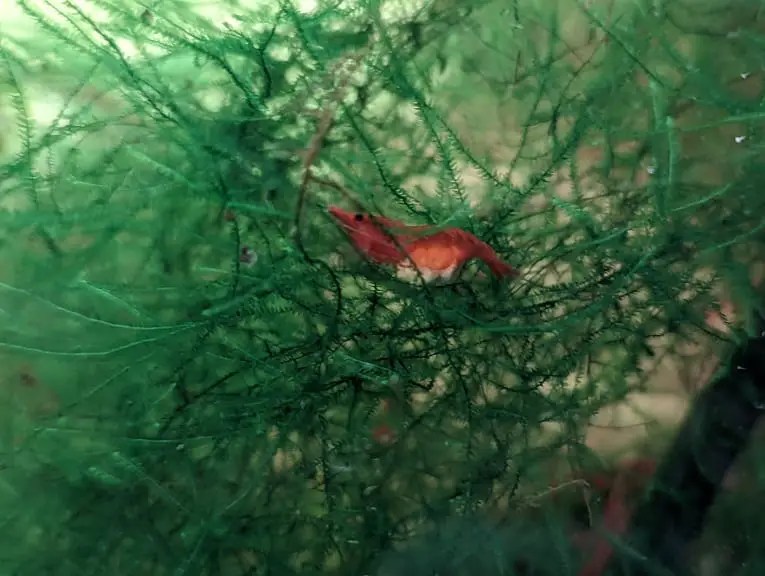If you see that your female Cherry Shrimps (or Neocaridina Shrimps) are saddled with eggs, then it is most likely a good sign as you should be seeing baby shrimps being born into your tank.
If your females don’t have saddles that are filled with eggs, then you can take a look at this troubleshooting article from Aquarium Blueprints to see what you can do in order to fix this problem.

1. The first step we recommend taking is to see if check to see the gender ratio of your Cherry Shrimps.
In general, male shrimps from this species are smaller in size and duller when it comes to coloration. When compared to their female counterparts, males should also have a straighter stomach.
A common mistake for beginning shrimp keepers is that they tend to get more colorful looking shrimps. As a result, you may end up with a tank that is full of females with no males in sight. Thus, you won’t see any saddles being filled with fertilized eggs due to the lack of reproductive activity.
2. There is a possibility that you have a water quality issue, which may be hindering the breeding process.
For the uninformed, Cherry Shrimps are more sensitive when compared to a vast majority of pet fish in the aquarium hobby. Therefore, it is very important that you keep both the ammonia and nitrites levels in your tank water to 0 ppm. When it comes to nitrates, you need to target less than 20 ppm.
We suggest testing your water to see if there are spikes in any of these harmful toxins.
To see how you can deal with ammonia and nitrite spikes, you can check out this detailed article. To see how you can gradually lower nitrates, we recommend taking a look at this comprehensive post.
3. You should also make sure that your water parameters are within preferred ranges when it comes to Cherry Shrimps. We suggest that you target the following ranges:
- 6.5 pH to 7.5 pH
- 7 GH to 15 GH
- 2 KH to 8 KH
4. Increasing the temperature of your shrimp tank may help your female Cherry Shrimps develop their egg saddles. We recommend that you keep your pet inverts somewhere between 70 °F to 75 °F to see if you can get more breeding.

5. If you see that your Cherry Shrimps were previously carrying a saddle of eggs before, then there is a possibility that the eggs have hatched and the baby shrimps have been born.
Keep in mind that the new born babies are really hard to see in the beginning, especially if you have a lot of hiding spaces. Therefore, it could take a few days or weeks for you to be able to easily see the next-generation.
There is also a chance that your shrimps may have shed or dropped their eggs before the babies could hatch. To see how you can deal with these problems, you can take a look at the following guides:
6. It is also important to note that most of the Cherry Shrimps you find in the hobby have been inbreed. This is usually done in order to create color and pattern variations of the same species. Due to the inbreeding, however, your female Shrimps may not be as fertile, which may result in a lack of eggs in their saddles.
In order to prevent inbreeding, we recommend adding new shrimps to your colony yearly so that the gene pool will remain diversify.
